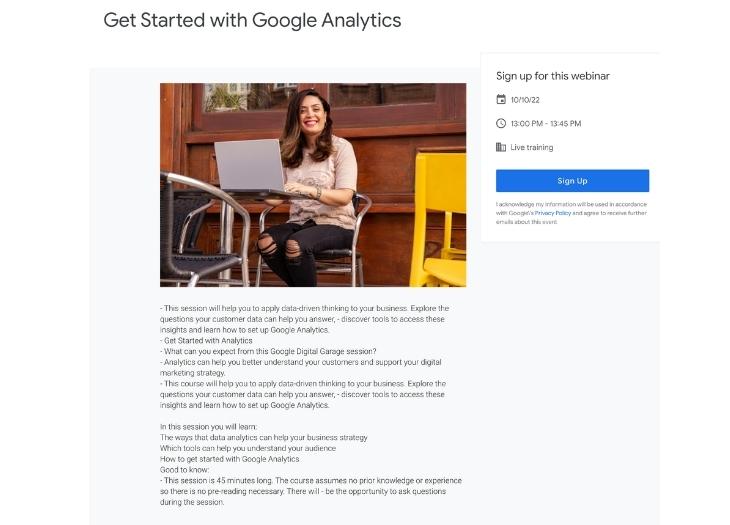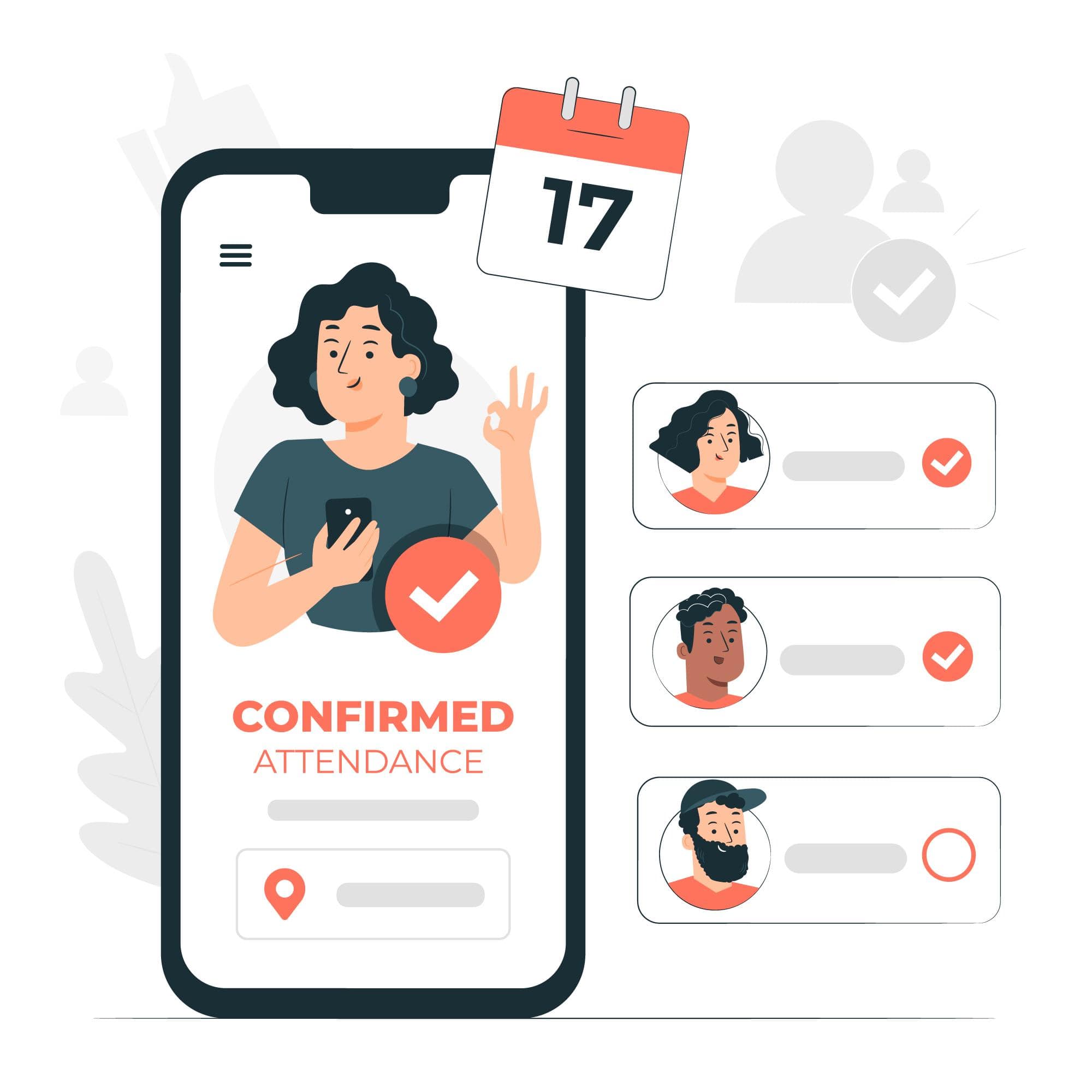12 Webinar Metrics That Matter
The average webinar conversion rate for registrations to attendees is a reported 55%. Moreover, when it comes to B2B marketing, webinars have a higher return on investment than digital ads and an ability to generate highly qualified leads. Look at BNB Mastry, who use webinars to get over 200% return on their marketing investment each month.
Webinars give you a direct line of communication with your potential customers. Not only can you open a dialogue with your attendees, but you have a chance to address and reduce their concerns about your product.
While webinars are proven to be an effective marketing technique, you can’t schedule, market, and create them, sit back and hope for the best. You’ll need to track and optimize your webinar metrics to maximize your ROI.
Let’s dive into which metrics to track if you want to measure webinar success and ensure your future webinars get the results you want.
12 Key Webinar Metrics to Track and Optimize for
These tips focus on metrics for free webinars rather than paid ones. The goal of free webinars usually is to get people into your funnel. It’s a way of generating warm leads that can easily turn into sales.
This differs from the goal of a paid webinar, which is usually, or also, to generate revenue and thus requires different metrics to be tracked to evaluate its success.
1. Webinar registrations
The number of registered attendees is one of the key webinar metrics to track. If lots of people sign up for your webinar, you’ve done a great job promoting it. A high webinar registration number also demonstrates that your webinar’s topic is both interesting and relevant to your audience.
Based on our experience, about 33% of the people who sign up for your webinar will also attend it, so the more registrants you can get, the better your chances of having a full webinar.
There’s no average figure for the number of registrants considered normal, as it depends on your industry and webinar topic. Set a target before you start your promotional efforts so you have a number to measure against.
If you’re not reaching your goal for registrations, analyze:
- The copy on your webinar landing page, is it discouraging people from converting?
- The topic of your webinar, is it highly relevant to your target audience?
- Where you are promoting the webinar and the promotional materials you’re using.
Optimizing these factors can help boost the number of attendees signing up for your webinar.
2. Source of webinar registrations
Once you’ve analyzed how many registrations you’re getting per webinar, it’s time to look at where those registrations are coming from.
You can use Google Analytics to check where the people landing on your registration landing page find you. Common places your sign-ups will come from include but aren’t limited to:
- Direct traffic – they found your URL and went straight to the site.
- Referral traffic – they were sent to your site from another site.
- Email traffic – they clicked on your link via an email you sent.
- Organic traffic – they found you with a search engine.
- Paid traffic – they found you via a paid advert on social media or elsewhere..
- Social media – they follow you or saw someone share your webinar.
Most webinar marketing strategies use a combination of these channels. You want to optimize your most effective channels to get the best returns on your marketing investment.
Analyze which channels are generating leads most consistently. For example, you may look at your number of registrants and discover that most of them are coming from your email marketing campaign, not your paid ads on social media. In this case, you’ll want to put less money into paid ads and focus more on your emails.
How long after you send a promotional email are people signing up? Look for patterns to help you understand your audience’s behavior in your analysis. If you can get this data, it will help inform your future marketing strategy and how you spend your webinar promotion budget.
3. Landing page views to registrants’ conversion rate
So, your marketing channels are driving plenty of traffic to your webinar landing page, but how many people are converting to registrations?
One of the most important webinar success metrics is how many people you can convert on your registration page. Analyzing your landing page to registrants conversion can tell you how well you’re reaching your target audience and how relevant your webinar is for them.
If you have high traffic to your landing page, but it’s not converting to registrations, you may be capturing the wrong audience’s attention. They click on your ad but arrive on your landing page to realize your webinar isn’t relevant to them. If this is the case, you can tweak the target audience for your ads.
Another reason your landing page to registration conversion rate may be low is because of your messaging and copy. Your landing page copy needs to be clear and concise if you want people to sign-up for your webinar. It needs to show the following:
- Why the webinar is relevant for this person.
- What they will learn from attending the webinar.
- Clear information about the date and time.
- An easy, prominent call to action.

Google does this well with the sign-up page for their Analytics webinar. The page clearly outlines what you will learn in the webinar and how it will benefit your business. The call to action is clear and stands out on the right-hand side of the page.
4. Webinar attendees
You may get hundreds of people signing up on your registration page, but if this doesn’t convert to attendees, you wasted time and money on the registration process. A low turnout could indicate several problems with your webinar strategy.
Some things you can examine if you have a poor turnout rate:
- If your webinar timing was off.
- Whether you should offer an option for later replay.
- If the content wasn’t compelling enough for the registrants to put the time aside to attend.
- If your webinar didn’t promise enough critical takeaways for attendees.
- Whether you sent enough reminders before the webinar. if not, the registrants might have forgotten about it.
- Guest speakers aren’t interesting or relevant enough.
To calculate your registrant-to-attendee ratio, divide your attendees by the registrations and multiply by 100. For example, you had 100 registrations and 30 attendees, which is 30/100 x 100 = 30%.
5. Cost per registration and attendant
Knowing your acquisition costs is another important metric to measure webinar success. You can calculate your total return on investment if you know exactly how much you’re spending on acquiring each registration and attendee.
Cost per registration and cost per attendant are different metrics because not every registrant will attend the webinar.
To calculate how much you’re spending on each registration, divide the cost of your marketing strategy by the number of registrants:
- It costs $5000 to get 1000 registrants = $5 per registration
To calculate the cost per attendant, you can divide your marketing costs by the number of attendants. For example:
- You get a 33% attendance rate = 330 of the registered people attended the webinar
- Cost per attendant = $5000/330 = $15.15
So you spend 3x on attendants than you do on registrations. Once you know how much you’re spending on each attendant, you can compare it with the total revenue you make from the webinar. If you’re in a deficit, you’ll want to adjust your budget accordingly if you decide to run more webinars.
6. Attendees to qualified leads conversion rate

The average attendee-to-lead conversion rate for webinars is between 20% and 40%, which is much higher than other lead-generation channels. The sign of a successful webinar is to end it with highly qualified leads in your sales funnel and strengthened brand awareness.
When you have the attendees’ engagement, you’ll want to convert those attendees into customers as soon as possible. Research shows that if you send your attendees marketing materials within an hour of the webinar, they are 60% more likely to convert. So, send your leads a follow-up email, an ebook, valuable information that will benefit their business, and a clear call to action to increase your sales.
Using the number of people who take this post-webinar call to action, you can calculate your lead conversion rate. Divide the number of people who took the call to action by the number of webinar attendees.
Not generating leads from your live event? You may want to investigate your webinar topic.
- Is it highly relevant for your ideal audience?
- Are they getting value from your webinar?
- How can you change your webinar content to make it more appealing?
Ask attendees for feedback to improve upcoming webinars. The more relevant your content is for your audience, the more you can improve your qualified lead conversion rate.
7. Webinar ROI
To calculate the ROI of your webinar, you need a clear overview of all the costs you made to keep track of all your expenses, from the planning stage to the production and promotion stage, so you can get an accurate overview of your returns.
While the average webinar costs between $3,000 and $5,000 to produce and promote, it’s possible to put up a webinar for much less than that, just as it’s possible to pull out all the bells and whistles and have it cost more. The most important thing is that you keep track of your budget and evaluate what your ROI is once the webinar campaign has come to an end.
8. Conversion rates
Of all webinar performance metrics, your conversion rate is the most important. The conversion rate represents the total number of people who purchase directly following the webinar. Your conversion rate will tell you if all of the time, money, and effort you’ve put into the webinar paid off.
It can be hard to track your conversion rate accurately because people will drop off at each stage of your webinar funnel. For that reason, include both people who only registered and those who registered and attended in your conversion rate calculations.
You can calculate your webinar conversion by dividing the total sales by the number of webinar attendees. You can also check which sales came from webinar registrants who didn’t show up.
9. Audience retention/average viewing time

Knowing your average webinar view duration is an essential metric for measuring the quality of your webinar content. If you start the webinar with 400 people and end with 20, your content isn’t engaging enough.
Look for trends in the average viewing time. If you notice any patterns, it can indicate where your content gets less engaging. If your webinar is longer than an hour and people drop off when the hour finishes, you could also consider condensing your webinar duration.
10. Audience engagement
How engaged is your audience? Are they interacting when you ask questions or ask them to contribute to a chat? The customer engagement level can offer valuable insights into how compelling and useful your content is to them.
If you find people aren’t responding to interactive features in your webinar, you may need to make some changes to the delivery of your content.
Live chat is an excellent feature for understanding your audience and how they interact with your business. Opening a dialogue with your audience can offer insights you won’t get with direct marketing.
11. Live vs. on-demand attendance
If the attendance figures for your live webinar are low, you still have the opportunity to get views with just-in-time webinars. Providing the option for viewers to watch your webinar on-demand can boost your webinar’s success.
Keep track of how many people watch your recorded webinar and the revenue generated from these replays.
Producing evergreen content for your webinars can effectively drive continuous sales after your webinar without the need to create new content. Check out how to create an evergreen webinar funnel here.
12. Quantitative and qualitative attendee feedback
Asking for audience feedback is another way to measure the success of your webinar. Understanding what they found useful and what improvements they suggest is an easy way to inform your strategy for future webinars.
Perhaps they have comments about the webinar timing or more questions on the topics you covered. Integrating this feedback into your future online events will help you bring in an even more engaged audience which can translate to sales.
Using webinar KPIs to inform your strategy
Analyzing your webinar metrics helps to inform your marketing and sales strategy, build an engaged audience, and improve your webinar ROI.
Knowledge of your numbers allows you to experiment in a trackable way with your content and promotional efforts to obtain better results.
Are you using webinars to get highly qualified leads into your sales funnel? Could you use some help getting the most out of them? Get in touch, and we’ll help you rock your webinar funnel.





